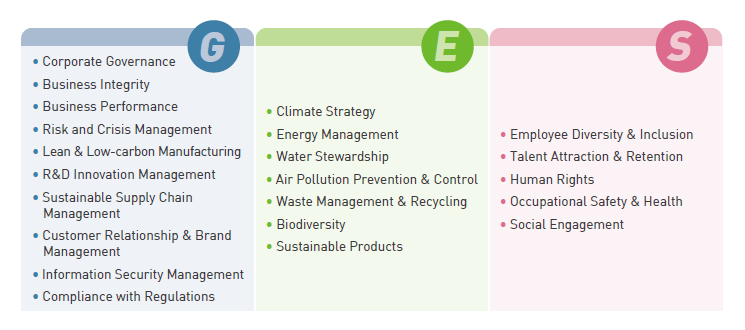Materiality & Stakeholders
The Process of Materiality Analysis
HIWIN conducted a materiality assessment in accordance with the GRI Sustainability Reporting Standards and the AA1000 Accountability Principles (AA1000 AP). A four-step analysis process was established to identify material topics for the 2024 Sustainability Report and determine the boundaries for sustainability disclosures. This process also integrates internal resource allocation and serves as a basis for formulating long-term sustainability goals.
In addition, HIWIN’s materiality analysis process was validated by internal and external experts and finalized by senior executives, resulting in the identification of 10 material topics. These topics were independently verified by TÜV Rheinland to ensure their reliability and completeness. The material topics were then reported to the Board of Directors and serve as a fundamental basis for developing HIWIN’s future sustainability strategies.
To strengthen senior management’s commitment and accountability for sustainability issues, HIWIN links material topics to the performance evaluations of senior executives by incorporating specific sustainability targets into the performance assessment system. This approach drives the implementation and continuous improvement of material topics.
Four Stages of Materiality Analysis
Stage 1: Identification of sustainability topics and stakeholders
In response to the revised GRI 2021 Universal Standards, HIWIN identified 22 sustainability topics relevant to its business operations. This process also considered the United Nations Sustainable Development Goals (SDGs), international trends, ESG evaluation criteria from global investors, and recommendations from both internal and external consultants. Based on discussions with internal teams and external consultants, the list of topics was refined as shown in the figure below. The finalized list of sustainability topics was reviewed and approved by the President and subsequently incorporated into three stakeholder questionnaires.


HIWIN identified its sustainability report’s stakeholder groups based on the five core principles of the AA1000 Stakeholder Engagement Standards (SES): Dependency, Responsibility, Tension, Influence, and Diverse Perspectives. Through this process, HIWIN identified 6 key stakeholder groups: employees, customers, suppliers/contractors, investors, industry associations, and community organizations.
Stage 2: Questionnaire and feedback analysis
Stage 3: Selection of material topics
A multi-dimensional approach was adopted to define material topics. Topics that met at least two of the three key principles were prioritized for inclusion in the material topic list. Based on the recommendations and discussions with internal and external experts, HIWIN ultimately identified 10 material topics. Each topic was evaluated against the three principles, and scored using a star rating system derived from the results of the stakeholder questionnaires and the 2024 impact assessment. The top 10 material topics were then ranked accordingly, as shown in the table below.
Note: The three key principles serve as qualitative criteria for determining inclusion in the 2024 material topic list. The four ranking factors were quantified into star ratings based on questionnaire and impact assessment results and used to determine the ranking of the 10 selected topics.
Stage 4: Impact scope determination
After identifying 10 material topics, HIWIN followed the GRI Standards to determine 18 material topics relevant to the company (including 13 GRI Standards, 4 SASB Standards, and 1 HIWIN-defined topic). In accordance with reporting requirements, HIWIN collected and disclosed internal information, data, and management approaches. Each material topic was then reviewed to determine its impact scope, covering the upstream procurement stage, HIWIN manufacturing processes, downstream customer use.
HIWIN Material Topics Management Approach
Stakeholder Communication Channels
Material Topics and Risk Management